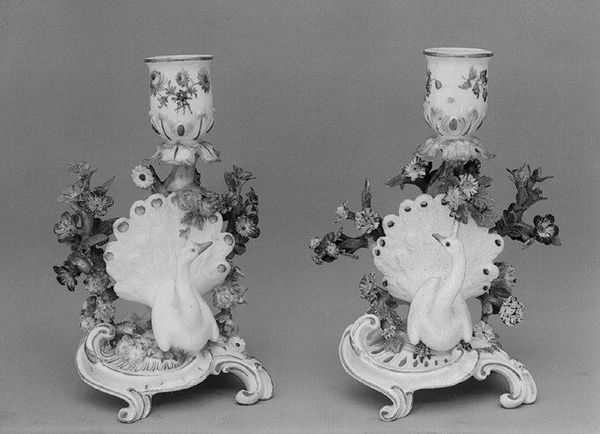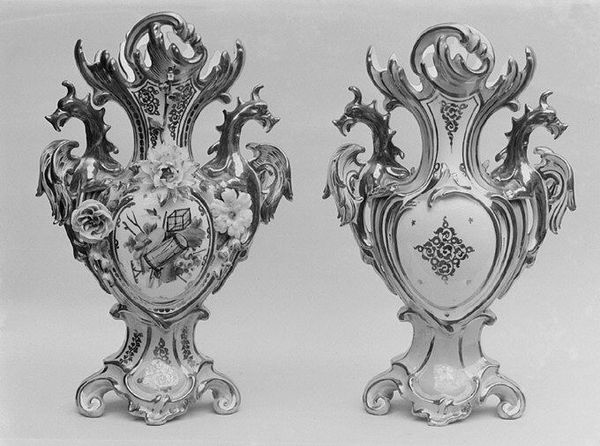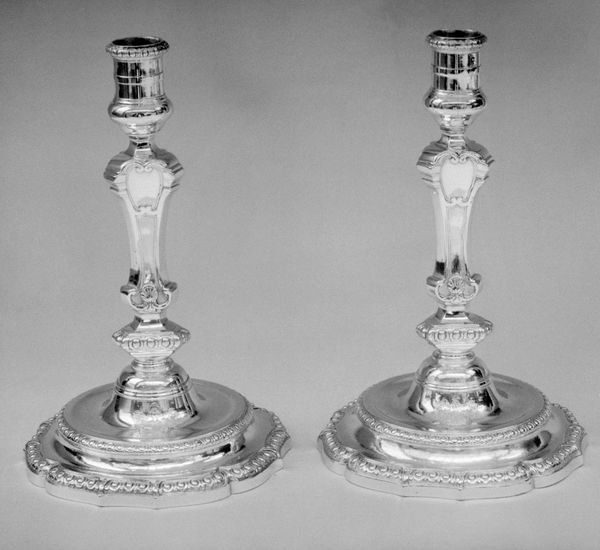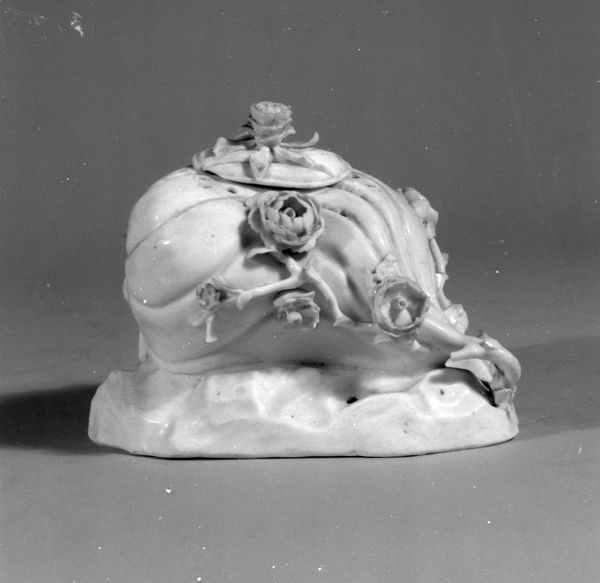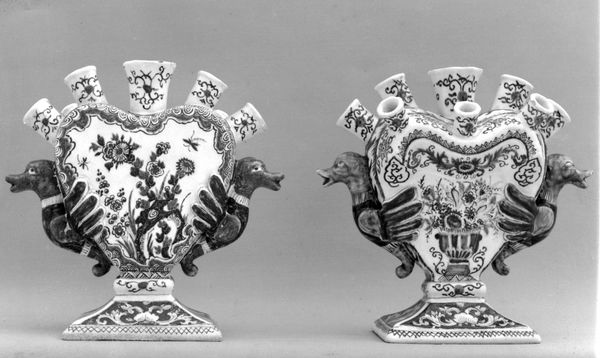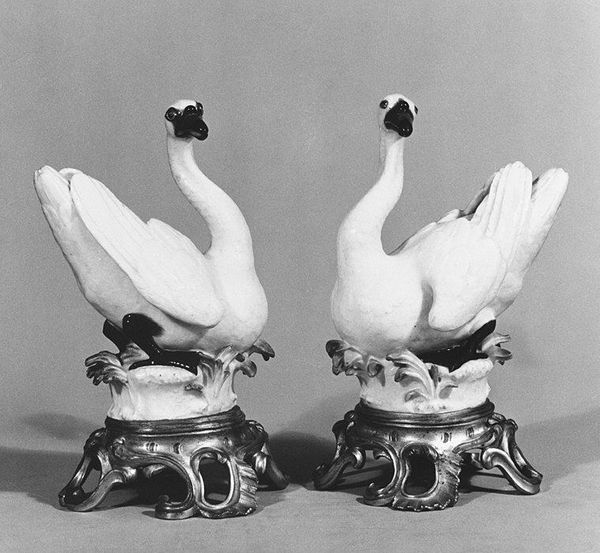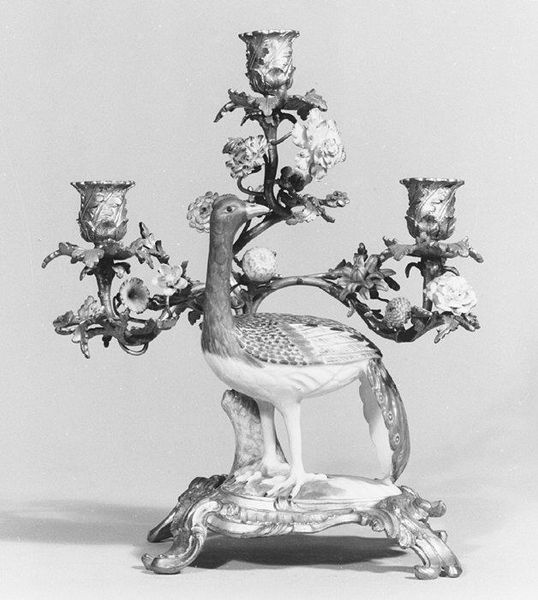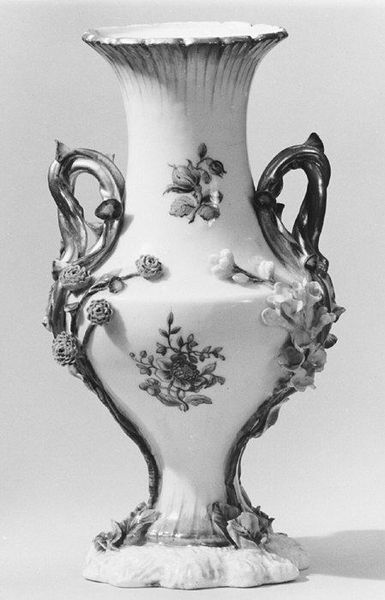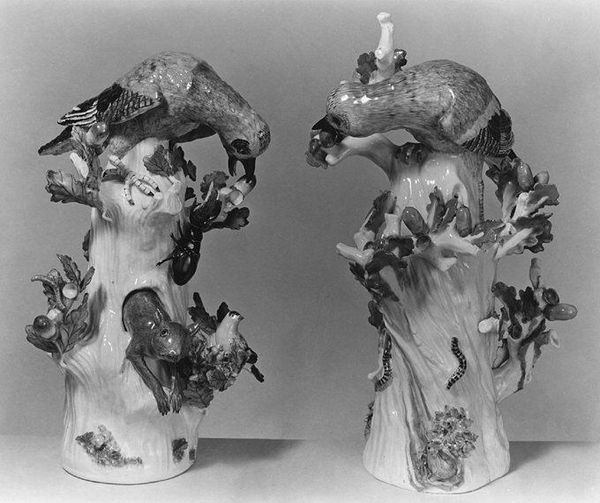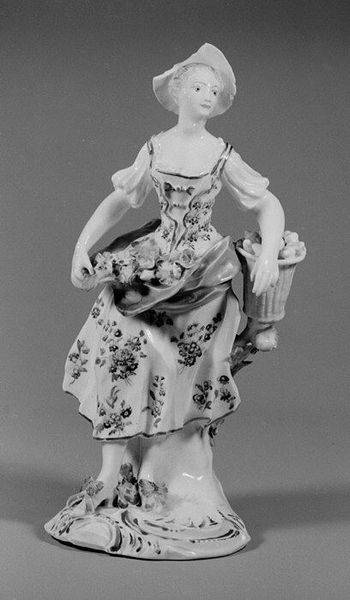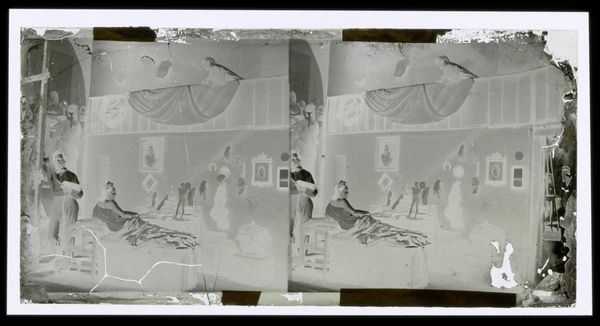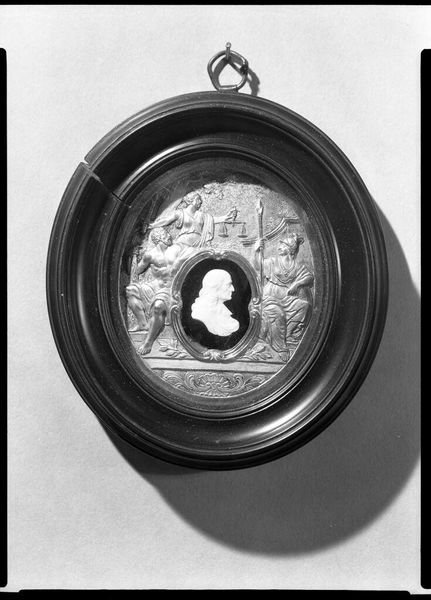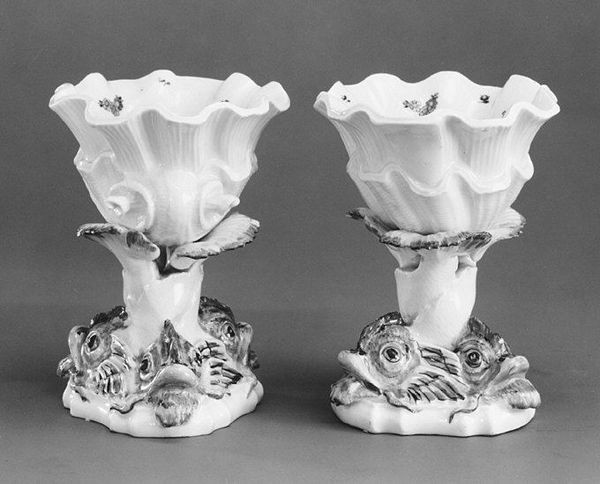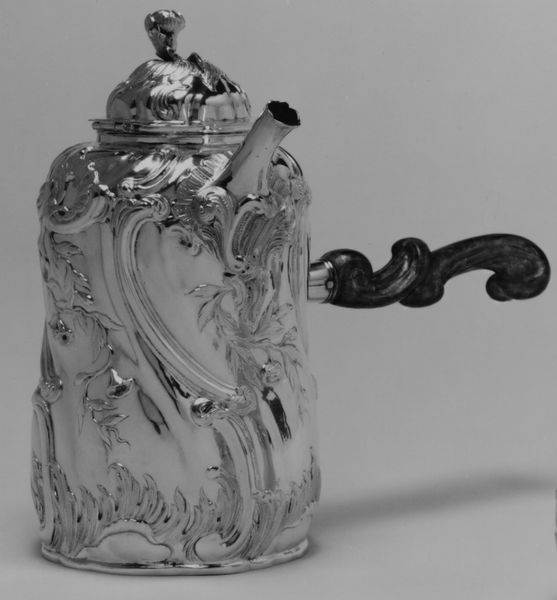
Toilet bottle (one of a pair) 1755 - 1765
0:00
0:00
ceramic, porcelain
#
portrait
#
ceramic
#
porcelain
#
figuration
#
decorative-art
#
rococo
Dimensions: Height: 7 in. (17.8 cm)
Copyright: Public Domain
Curator: Immediately, I notice the playful Rococo details. It's almost excessive, but somehow it works. Editor: These are a pair of toilet bottles, dating from approximately 1755 to 1765, made at the Chelsea Porcelain Manufactory. You can find them here at the Metropolitan Museum of Art. Porcelain, of course, would have been a highly prized material at that time. Curator: Absolutely, porcelain signified status. Considering the meticulous craft and labor involved, owning something like this announced a certain level of social standing and financial freedom. Were these made for the aristocracy? Editor: Undeniably so. Notice the portraits embedded within the bottles themselves? These were luxury goods intended for an elite clientele, designed not just for practical use, but also as a reflection of personal refinement. I'm curious to know who the portrayed figures might have been and how their likeness affected marketability. Curator: And let's not forget the means of production. The expertise required for these elaborate forms would concentrate around specialized workshops. It's all about material culture and class stratification at the time. The portraits also beg questions about who commissioned the works and whether these images perpetuated the era's notions of gender and status. Editor: Precisely! The bottles tell a history far beyond their function. They encapsulate power structures, trade routes for raw materials, the market for skilled artisans and, ultimately, the self-fashioning of the elite during that period. Curator: Looking closely, the handles even incorporate small sculpted animal heads. Were they merely ornamental or did they potentially carry symbolic weight within their original domestic setting? Editor: They definitely add to the rich semiotics embedded in these objects, demanding analysis far beyond their immediate use. Considering the rise of factories then too, one could examine this manufacture within broader economic shifts. Curator: Looking at the image brings into view multiple aspects, even prompting new investigations. What we choose to place value on and preserve says as much about us today as it did for 18th-century society. Editor: It is precisely by recognizing these dialogues between art and context, maker and society, that history remains a lively, continuous discourse.
Comments
No comments
Be the first to comment and join the conversation on the ultimate creative platform.
